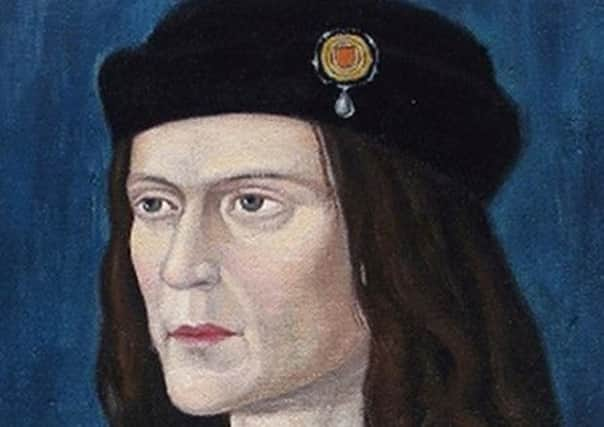Chris Skidmore: Richard III, a king and a loyal Yorkshireman


Ever since then, there has been a tussle between York and Leicester over where the king should be buried, with debates called in Parliament and petitions on both sides being gathered. With Richard’s body not set to be released from forensic study until later in the year, with the date of his internment set for May 2014, it’s likely that the debate will only continue to rage, especially now surviving relatives have launched an appeal in the High Court.
But this shouldn’t distract us from what is truly needed – an accurate reassessment of Richard the man, as seen through the lens of the life of a 15th century monarch.
Advertisement
Hide AdAdvertisement
Hide AdIn spite of his historic reputation as a “tyrant”, there can be no doubt that he remained a popular monarch in his homeland of the Yorkshire region, where he had spent his adolescent days growing up at Middleham Castle.
When Richard decided that he would claim the throne, he wrote in earnest to the citizens of York, who were more than happy to send men to their patron. It was this threat of thousands of “northern men” approaching London that allowed Richard to secure his coronation in July 1483, after preachers had declaimed Edward V and his brother Richard – the “Princes in the Tower” – illegitimate.
In celebration of his coronation, York sent wine and gifts to his son, Edward of Middleham. Richard rewarded York with a lavish visit to the city in August 1483, where Edward was created Prince of Wales.
Further rewards were given to Richard’s favourite northerners, men such as Sir Robert Brakenbury or Sir Marmaduke Constable of Flamborough, who were given land and office in the southern counties, prompting one contemporary chronicler to declare there had been an “invasion” of “northern men”. Already in 15th century England, the ideas and concepts of a North-South divide were beginning to emerge.
Advertisement
Hide AdAdvertisement
Hide AdWhen news of Henry Tudor’s invasion in August 1485 broke, the citizens of York were so earnest in their desire to help the beleaguered king that they sent their own delegation to Richard, then in Nottingham, to find out how many men they should send.
Yet a plague had broken out in the city that summer, making it difficult to recruit an army. In the end, the battle was over before York had the chance to send its delegation of 80 men. When the city heard the news, in their minute book the clerk wrote: “King Richard, late mercifully reigning over us, was through great treason... piteously slain and murdered, to the great heaviness of this city.”
What did the clerk mean by “great treason”? It seems that it was not merely a reference to the deeds of the Stanley family, who sat out the battle until the last minute, when they decided to back Henry Tudor, and entering the battle from the side, swept Richard III into a marsh where he met his brutal death.
Another northerner, Henry Percy, the earl of Northumberland, had been appointed to lead Richard’s rearguard, commanding 7,000 men. But when Richard’s vanguard, led by the elderly duke of Norfolk, had been routed, Northumberland’s men did nothing but stand still, refusing to fight. The reasons for Northumberland’s inaction are still unclear, but it may be that his army refused to fight with the memories of the bloody battle at Towton still in their minds. It was at this moment that Richard, realising that his army had deserted him, chose to charge on horseback towards Henry Tudor’s standard. Shakespeare’s depiction of the king crying out “A horse, A horse!” for his kingdom could not be further from the truth.
Advertisement
Hide AdAdvertisement
Hide AdAll the contemporary sources agree that Richard fought bravely to the last. He even managed to unhorse a soldier standing six feet eight inches tall, and kill Henry Tudor’s standard bearer, Sir William Brandon, with a single blow.
When the Stanleys charged into battle, the end for Richard came fast. The evidence of the wounds to the remains of his skeleton demonstrate not only that Richard had a curvature of the spine, but that the back of his head had been sheathed clean off by one of the most effective weapons of war – the halberd, a long axe on a six foot pole.
Another wound caused by a sword had penetrated straight through his brain to the other side, while other injuries may have been caused after Richard’s death – when his body had been slung naked over the back of a horse and his “privy parts” exposed – including a stab wound between his buttocks.
It was a bloody world, in which retribution was rarely forgiving. Yet few can deny the loyalty that Richard showed Yorkshire – and Yorkshire, in turn, showed Richard.